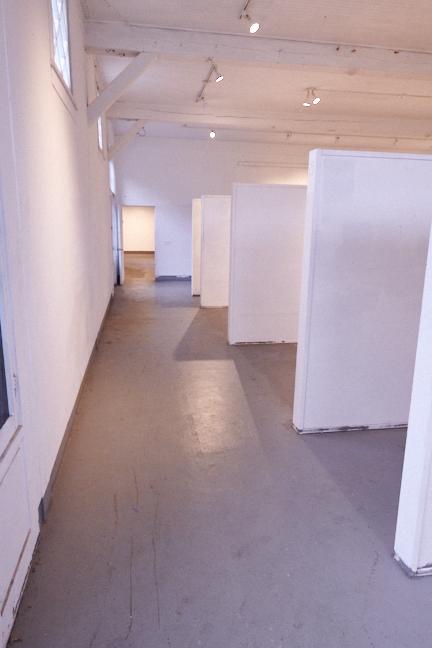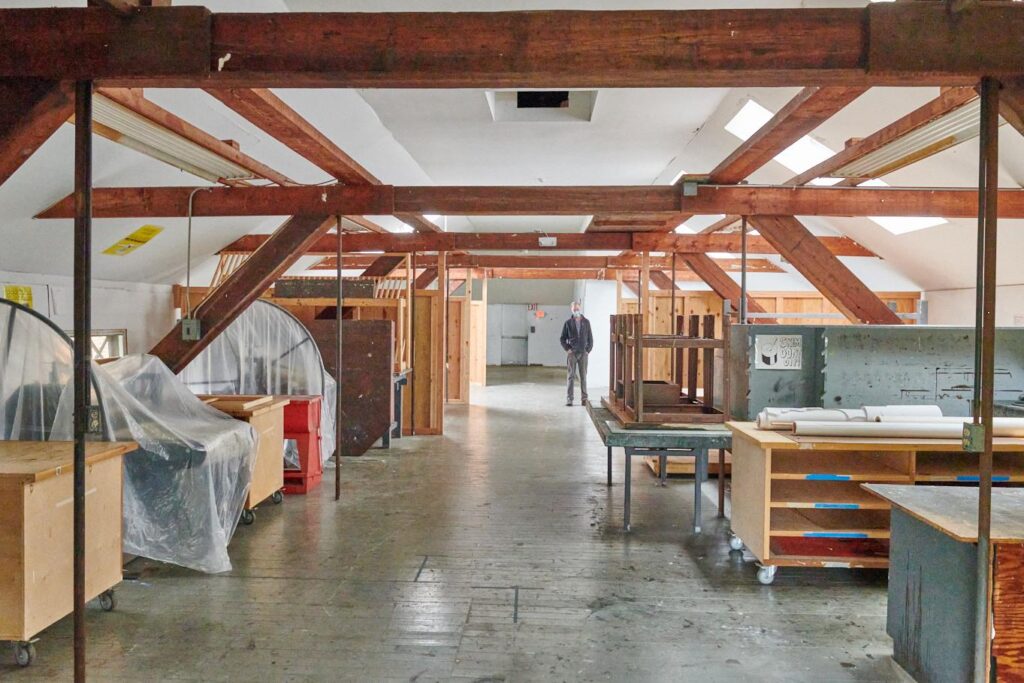Art Barn Will Be Rebuilt
Ambitious project will benefit Yale Norfolk School of Art
By Wiley Wood
Photos by Savage Frieze
The undergraduate summer program conducted by the Yale School of Art in Norfolk since 1948 was canceled this year, like so much else. But it’s been a good thing in a way. Not for the 26 rising seniors from around the country who would have taken part in the session; and not for the Norfolkians who usually participate in the program, either by providing housing to the students, or attending the lecture series in May and June, or taking the community drawing class. But for the trustees of the Ellen Battell Stoeckel Estate, which owns the physical plant of the Yale Norfolk campus, the shutdown is providing a window of opportunity to give the Art Barn a much-needed makeover.
The dilapidation of the building has been a concern for years, but plans to rebuild were put on hold while the Music Shed, where concerts for the Yale’s graduate music program are held, underwent major renovations. The trustees then turned to an upgrade of the faculty housing, the many small, detached buildings that dot the estate. Finally it was the Art Barn’s turn, and pre-planning began in 2019.
“Basically, nothing has been done to the building in the last 50 years,” said the project’s architect, John Martin.

Built in 1898 as the stables for the Battell estate, the Art Barn had horse stalls in one wing and the family’s carriages in the other. Cows were kept in the basement, and the upstairs was a hayloft. Then in 1940, Norfolk’s celebrity architect, Alfredo Taylor, was hired to trsnsform it into a space for the arts. The horse stalls became practice rooms for the music students and, when the art program started in 1948, studios for the art students.
Martin’s plan is to restore the exterior to its original appearance, removing the fire escapes and replacing the shingles, and do “a 100 percent gut of the interior.” The bones of the building will survive, structurally reinforced where walls have bowed outward, but the electrical wiring will be replaced, new lighting installed and wash stations improved. The multipurpose room, where folding metal chairs are deployed for lectures and whisked away for exhibitions, will be downsized slightly to make space for larger student studios in the adjoining wing. And the central part of the building will be torn out to put in an elevator with a stairway wrapping around it.
“It basically needed a renovation,” said Martin, who points out that many features of the original stables will be retained, including the exposed trusses in the upstairs printmaking studio, the diamond-paned windows on the ground floor, and the beadboard ceiling of the multipurpose room, which was covered over in the 1970s.
The Art Barn is central to the educational enterprise, according to Byron Kim, co-director with his wife, Lisa Sigal, of Yale Norfolk School of Art: “Without the building, I can’t imagine how we would have a program.” Sigal compares the former barn to the generic, white-box buildings found in many art schools: “The building is idiosyncratic, it has its own history; it feels like a place where creative things can happen.”
Estimates of the renovation cost are still fluctuating. “The architect, John Martin, had decided that the work would be done in four phases so as not to disrupt the program,” said Kim, “and it was going to cost over $3 million. But now, with Covid, it looks as though it will get done in just one phase at the discounted rate of $2.75 million.” He smiles ruefully. “And if next year’s program is canceled because of the pandemic, it will definitely get done in one phase.”
The money is being raised locally by the Ellen Battell Stoeckel Estate, which has received an anonymous gift of $1 million from the community, a challenge grant that has been met, according to trustee David Low. In addition, Kim and Sigal are reaching out nationally to alumni of the program. “Byron and Lisa are contacting everyone whose life has been touched by this building,” says Low. “It’s the kind of project that couldn’t have been done without Google.”
Kim says that the program has not previously maintained contact with its students but “it’s been great talking to alumni of different generations who have been through Yale Norfolk.” He particularly mentions Sheila Hicks, a Paris-based fabric artist and 1956 Norfolk alumna, “who has a huge, thriving career that has mushroomed in the last 10 years.”

Although the program is small, says Kim, “it’s incredible how many influential artists have gone through it.” Among other Norfolk alumni, he names Eva Hesse, who died young; Vija Celmins, who recently had a retrospective at the Met Breuer in New York; and Mickalene Thomas, who earned her MFA from Yale in 2002. “Beyond the fundraising, we’d like to create a community of alumni artists,” says Sigal.
The students from this year’s applicant pool were nominated by the art departments of more than 100 schools around the country. “We have two streams of kids,” says Kim, “those from liberal arts colleges, which have no visual arts requirements, and those from art school, who have never written papers or done any serious reading.” The small size of the program allows both to be accommodated.
“For many,” says Sigal, “it’s the first time they’re treated as artists, that they’re exposed to this level of conversation and thinking.”
Kim and Sigal want to make the program more and more diverse. “Last year we had a student from an art school in Finland and another from Concordia University in Montreal.” They would like to reach out to art schools in China. “And we’d like to get more graphic design students,” says Kim, “or students who work with sound, so-called visual artists who work only in sound.”
Yet the program has always suffered from being under the shadow of Yale’s splashier graduate program for music. The larger share of Battell Stoeckel Estate funds go to the chamber music festival, says Kim, and within the Yale School of Art, funding for the summer program is really an afterthought.
“In terms of money, we barely have enough to run the program,” says Kim. “We have no money for scholarships, and barely enough for supplies.” Last year, for printmaking, they used old cans of ink that they found in storage because there was no money in the budget for new ones. And some students had to beg, borrow or run Kickstarter campaigns to raise the $2,000 tuition.
The capital campaign has set Kim thinking that Yale Norfolk Art School might raise extra funds for its program. “An extra $5,000 a year in discretionary spending would make a huge difference.” He laughs. “We were just talking about $3 million. But $5,000 or $10,000 would make a big difference.”
The students don’t have access to a lot of materials or machinery. “There’s no shop, you can’t really make stuff,” says Sigal. But the program makes a virtue of its limitations. “The student is faced with being an artist, and you can only use your brain,” says Kim. “So we’ve built our pedagogy around that.”

